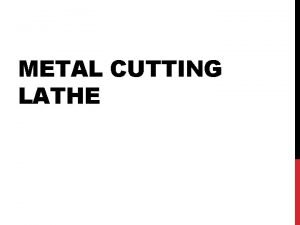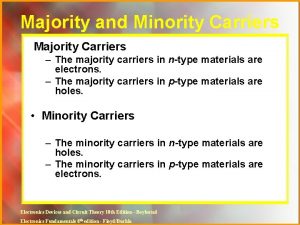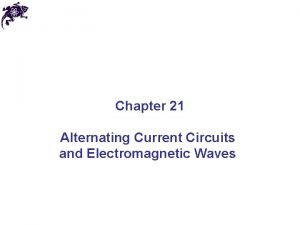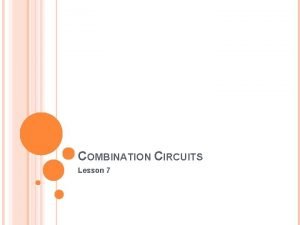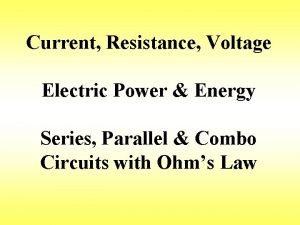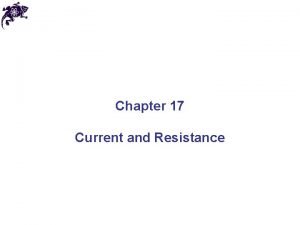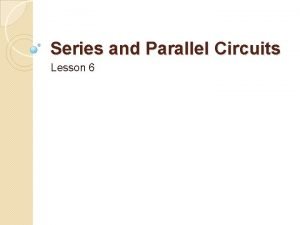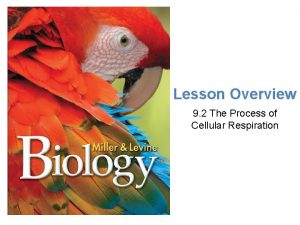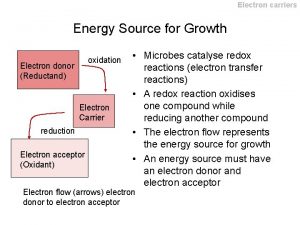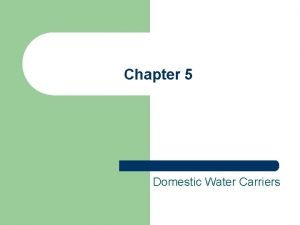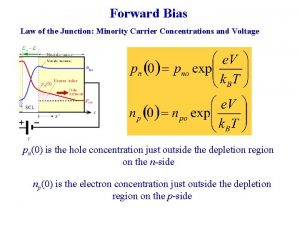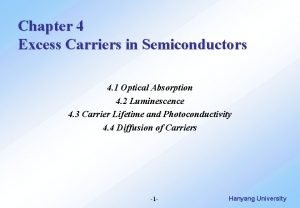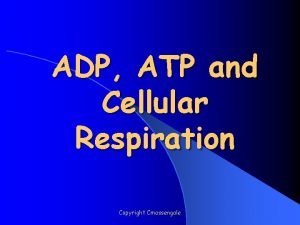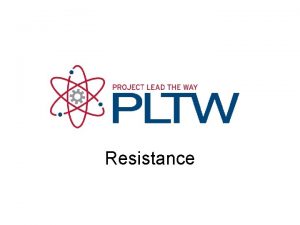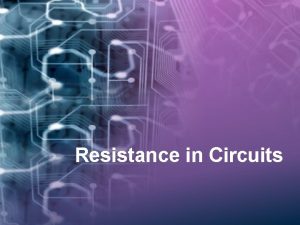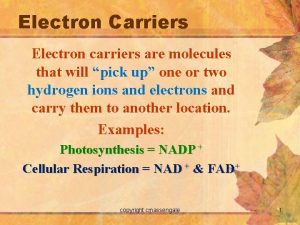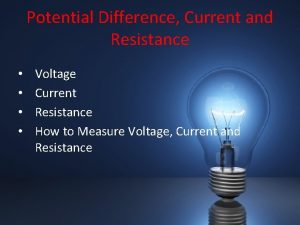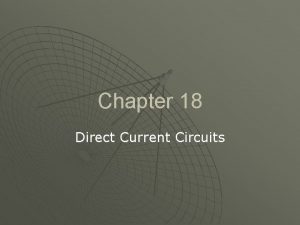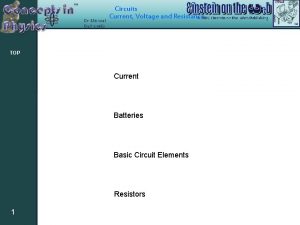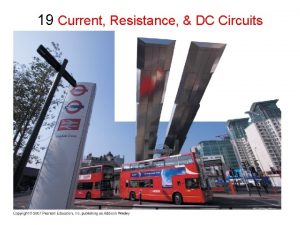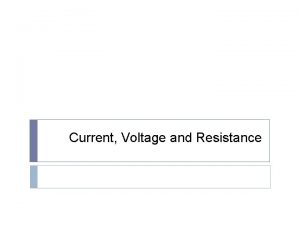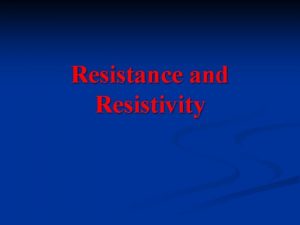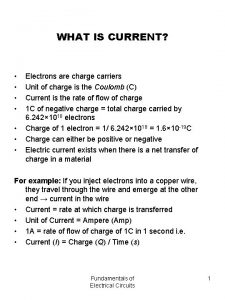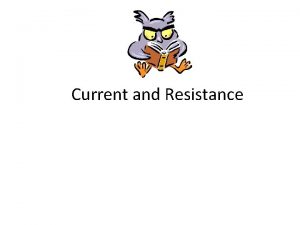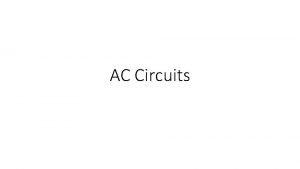Circuits Current and Resistance Charge Carriers The charge

















- Slides: 17

Circuits Current and Resistance

Charge Carriers The charge carriers are the electrons. Protons are trapped in the nucleus and are not easily removed. The valence electrons are far from the nucleus, and in conductors they move from atom to atom easily. Electron move from low potential (negative) to high potential (positive). They fall up, which is a bit awkward. Since this is backwards compared to mechanics it is easier to pretend the positive charges are moving. If the positive charges were able to move they would fall from high potential (positive) to low potential (negative), just as a mass falls from a high height to a low height. Since the charge on protons and electrons are exactly the same, it does not matter mathematically which charge is moving. The only difference is the direction of charge flow.

Motion of charges in a conductor Motion of charges is caused by a potential difference. Batteries and generators create a potential difference (a height difference so to speak) that positive charges can fall through. As they fall they do work and run electrical devices. If we accept that positive charges are moving, then charges move from the positive plate to the negative plate of the battery. When a battery is connected to wires an electric field surges through the wires from the positive to the negative terminals of the battery. This takes place at the speed of light as a field has no mass. The electric field creates a force on the charges causing them to move. Theoretically they should accelerate to the speed of light. However, as the charges move they start colliding with one another and with imperfections in the wire. The collisions slow the charges to a very slow speed in cm/second.

Current The amount of charge passing a point in a wire every second. Rate that charges move through a circuit. I Current amperes (amps) A Q Charge coulombs C t Time seconds s

Conditions for a Current to Flow A path made of conducting material. A potential difference (net pressure) between the end points of the path of conducting material.

Example 1 20 Coulombs of charge move past a point in a wire in 40 s. a. Determine the current in the wire. b. Determine the number of electrons moving through that point each second.

Resistance All conductors have molecular imperfections that slow current. These imperfections act like air resistance in mechanics. Variable: R Units: Ω (ohms) Example: the resistance in the circuit is 2 ohms, R = 2 Ω ρ is the resistivity, a measure of the quality of the material the wire is made of. It will be found in a table in the text. L is the length of the wire. A is the area of the end of the wire. Wires are usually cylinders, so the area of the end is a circle, A = π r 2.

Factors affecting resistance ρ Increasing resistivity increases resistance. A wire made of a material with more imperfections (obstructions) increases resistance. In other words, when resistivity is high the wire is made of bad materials. L Increasing length of the wire increases resistance. This makes sense, since you are increasing the number of obstructions (caused by the resistivity) in the wire. A Decreasing the area increases resistance. Making the wire narrower is like reducing the number of lanes on a freeway. There is one factor not evident in the equation Increasing temperature increases resistance. The charges now have to get past imperfections that are vibrating faster.

Example 2 A copper wire (resistivity 1. 7 × 10− 8) has a length of 5. 0 m and the radius of 1. 5 mm. Determine the resistance of the wire.

Where is resistance found? All conductors have imperfections in the molecular makeup. Therefore, anything made of conducting material has resistance. Wires All electrical components All electrical devices (Ipods, TV’s, etc. ) Even batteries and generates that make electricity flow have resistance (known as internal resistance) Even though the formula above calculates the resistance of wires, we will assume the resistance of wire to be so small that it is negligible. This will make our problems easier to solve, just as ignoring air resistance avoided having to apply calculus.

Resistors are specifically designed to create a known amount of resistance. This seems ridiculous. Why would we want to slow and waste electricity? Components in electrical circuits are sensitive and need an exact amount of current and potential to function correctly. Resistors with known values can be used to channel electricity down the correct path in a complex circuit and they can be used to ensure that the electrical components are not overloaded.

Light Bulbs Light bulbs are actually a specialized form of a resistor. Light bulbs consist of a thin wire, known as a filament, that creates a lot of resistance. When flowing charges, current, pass through a wire with resistance they are colliding with imperfections in the conducting material and with each other. The more imperfections, the more collisions, and the more heat that is generated. Filaments are made of a material that glows, giving off light, when they get hot enough. A light bulb is a resistor that glows.

Ohm’s Law The potential (pressure) and resistance in a portion of a circuit determines the current flowing in that part of the circuit. Example 3 A 3 Ω resistor is connected to a battery producing 6 V of electric potential. Determine the current in the circuit.

Power is the rate of work (rate of change in energy). In electricity it will be electrical potential energy that changes. and energy is and current is

Common Phrase Indicating Power Often problems do not ask for power. Instead they frequently ask for the rate of work the rate that energy is used (consumed) the rate that energy is produced (generated) While the left equation is from mechanics it is still valid for electricity problems. The right equation is specific to electricity.

Other Equations for Power Combining the power equation with Ohm’s Law generates two additional power equations

Example 4 A 3 Ω resistor is connected to a battery producing 6 V. Determine the power in the circuit. This can be done in two steps Or, in one step if you are familiar with the power variations
 Advantages of parallel circuits over series circuits
Advantages of parallel circuits over series circuits Constant rate filtration and constant pressure filtration
Constant rate filtration and constant pressure filtration Ignoring friction air resistance and electrical resistance
Ignoring friction air resistance and electrical resistance Carriers and catch plates
Carriers and catch plates Electronic devices floyd 10th edition
Electronic devices floyd 10th edition Alternating current circuits and electromagnetic waves
Alternating current circuits and electromagnetic waves Calculating combination circuits
Calculating combination circuits How to find current in a parallel circuit
How to find current in a parallel circuit 17-1 current and resistance answers
17-1 current and resistance answers Lesson 6 current voltage and resistance in a circuit
Lesson 6 current voltage and resistance in a circuit Current potential difference and resistance
Current potential difference and resistance Young and freedman
Young and freedman Electron carriers in cellular respiration
Electron carriers in cellular respiration Electron carriers
Electron carriers Domestic water carriers
Domestic water carriers Pn diagram
Pn diagram Haynes shockley experiment
Haynes shockley experiment Electron carriers in cellular respiration
Electron carriers in cellular respiration



